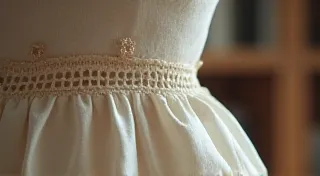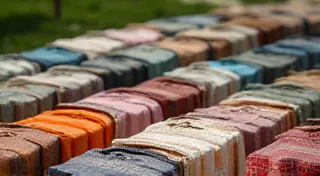The Echo of Silk: How Forgotten Fabrics Whisper Stories of Resilience
There’s a peculiar magic that settles over you when you hold a piece of truly old clothing. It’s not just the delicate stitching, the faded colors, or the exquisite tailoring. It’s something deeper – a feeling of connection to the hands that made it, the life it lived, and the era it embodied. When I first began collecting vintage fashion, I was drawn to the aesthetic – the glamour of the 1930s, the playful silhouettes of the 1950s. But over time, my fascination shifted. I started listening for the echoes within the fabric, the stories woven into the very threads.
Those echoes aren't loud pronouncements; they're subtle whispers, discernible only to those who take the time to listen. They’re the whispers of resilience, ingenuity, and a profound respect for craftsmanship that feels increasingly rare in our modern world.
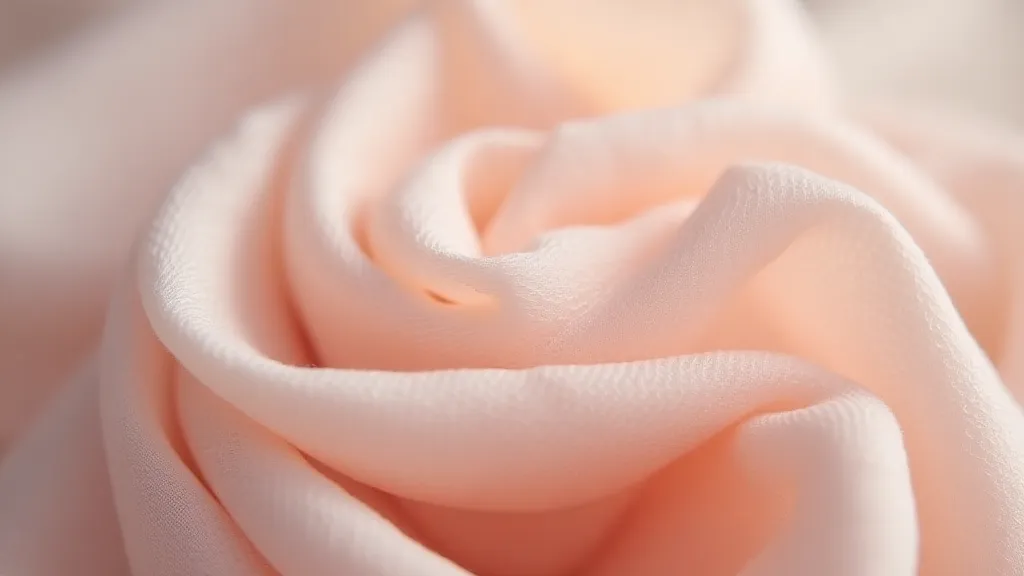
The Allure of Forgotten Textures: Crepe de Chine, Challis, and Batiste
Consider crepe de chine, for example. Its name, literally "Chinese crepe," hints at its origins in the textile trade between China and Europe in the 17th century. Initially, the term referred to a variety of loosely woven silks imported from the Far East. The earliest crepe de chine was prized for its extraordinary softness and drape – a luxurious alternative to stiffer silks. Its production was a closely guarded secret for a long time. The crinkled texture, so integral to its beauty, was achieved through a unique sericulture process, creating a fabric that fell with an almost liquid grace. It became a staple for intimate apparel, blouses, and linings, representing understated elegance for ladies of the Victorian and Edwardian eras.
Challis, similarly, carries a history steeped in international trade. Named after John Challis, a 17th-century English haberdasher who traded with France, challis emerged as a softer, lighter alternative to coarser wool fabrics. Often woven with silk or cotton warp threads and wool weft, challis possesses a characteristic slightly fuzzy nap and a gentle, almost velvety feel. It became incredibly popular for children’s clothing and delicate undergarments, prized for its breathability and comfort. My grandmother had a challis dressing gown, a faded lavender hue, and the memory of the way it felt against my skin as a child is deeply comforting, a physical embodiment of her love and care.
Then there's batiste, a fine, semi-sheer fabric traditionally made from cotton or linen. Its name derives from Baptiste, a French saint, and it was particularly popular in the 18th and 19th centuries. Batiste’s airy lightness and crispness made it ideal for blouses, petticoats, and infants' wear. The meticulous attention to detail required in its production – the fine yarn, the careful weaving – made it a symbol of refined taste and quality.
The Scarcity and Revival: A Story of Resourcefulness
The First and Second World Wars, along with significant economic shifts, drastically impacted the production of these beautiful fabrics. Silk production in China was disrupted, import restrictions made European manufacturing difficult, and cheaper, synthetic alternatives began to emerge. The intricate techniques passed down through generations were often lost or simplified in the push for mass production. Suddenly, the luxurious drape of crepe de chine and the gentle softness of challis became almost unheard of.
But stories don’s end there. In recent decades, there's been a remarkable resurgence of interest in these ‘forgotten’ fabrics. Small-scale artisans and milliners, driven by a desire to preserve traditional crafts and respond to a growing demand for sustainable fashion, are painstakingly reviving the original methods of production. They're sourcing higher-quality yarns, experimenting with natural dyes, and meticulously recreating the original weaves. This isn’t just about aesthetics; it's about honoring the legacy of those who came before and embracing a slower, more considered approach to clothing.
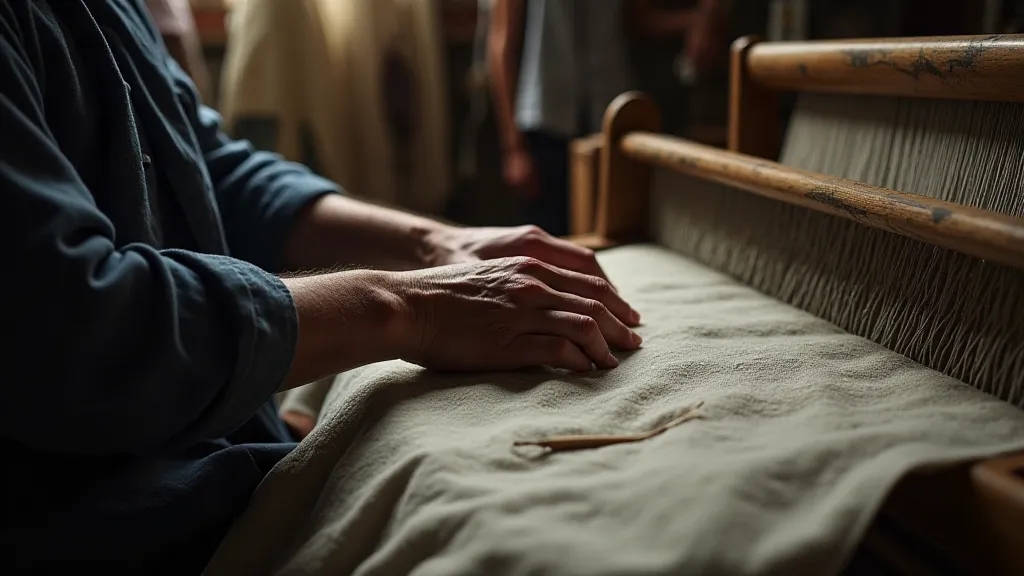
More Than Just Fabric: A Reflection of Values
The enduring appeal of these fabrics is more than just about the tactile pleasure of silk or the delicate beauty of cotton. It reflects a broader cultural shift – a growing awareness of the environmental and social impact of fast fashion. Consumers are increasingly seeking out clothing that is not only beautiful but also ethically produced and durable. The resurgence of vintage and secondhand clothing is a testament to this desire. When we choose to embrace vintage, we're actively rejecting the disposable culture that dominates so much of the modern world.
Furthermore, there's an inherent beauty in imperfection that vintage fabrics possess. Faded colors, slight wear, and occasional repairs tell a story – a tangible record of the garment’s past. These imperfections are not flaws; they’re marks of authenticity, reminders that clothing is meant to be lived in and loved.
Collecting and Caring: Preserving the Echoes
For those interested in collecting vintage fabrics, a few simple precautions can go a long way in preserving their beauty and integrity. Store delicate fabrics in acid-free tissue paper and garment bags, away from direct sunlight and humidity. When cleaning, always spot test first and consider hand-washing or dry cleaning by a specialist familiar with vintage textiles. Repairing small tears or loose seams can prevent further damage and extend the garment’s lifespan.
It’s also incredibly rewarding to learn about the history of a particular fabric or garment. Researching the era it was made in, the techniques used to produce it, and the social context in which it was worn can deepen your appreciation for its significance.
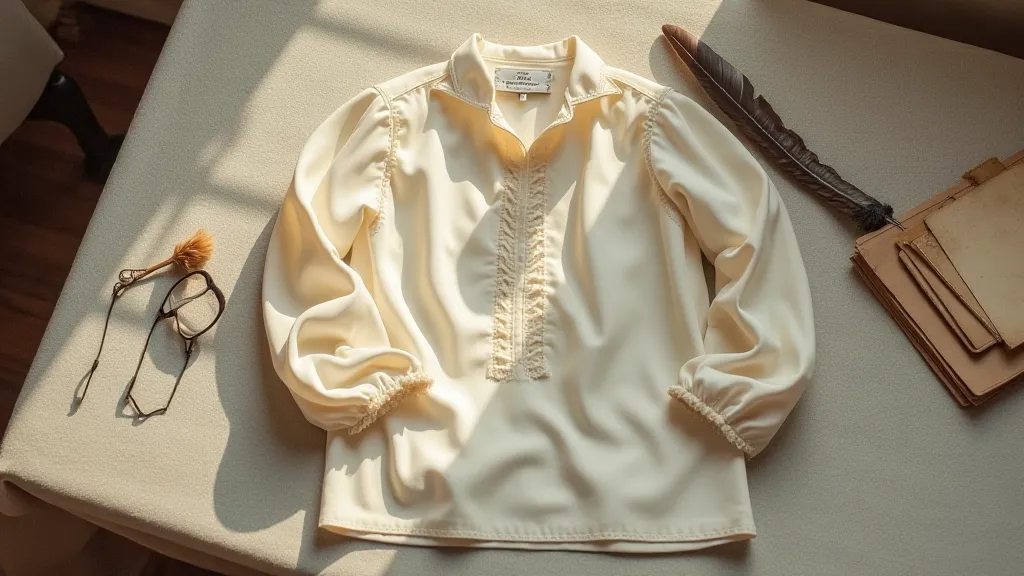
The echo of silk isn’t just a sound; it’s a feeling – a connection to the past, a celebration of craftsmanship, and a hopeful vision for the future. By listening closely to the stories woven into these forgotten fabrics, we can not only appreciate their beauty but also rediscover a sense of purpose and meaning in our own lives. It's a reminder that true luxury isn't about extravagance, but about quality, durability, and the enduring power of human ingenuity.



